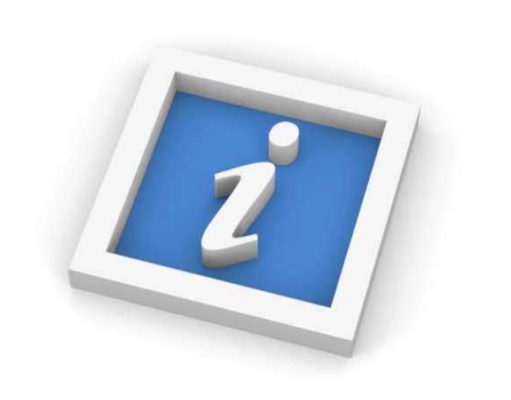Religious and Political Opposition During WWII

The Soviet Holocaust: Unveiling the Tragic Truth of Ethnic Cleansing
Introduction:
The Holocaust of World War II remains one of the darkest chapters in human history, forever seared into our collective memory. However, it is crucial to shed light on another horrific crime against humanity that unfolded parallelly but often remains overlooked: the Soviet Holocaust through ethnic cleansing. This article will dive into the depths of this tragedy, exploring its origins, scale, and impacts, in an effort to educate and remember the victims of this lesser-known catastrophe.
Origins of Soviet Ethnic Cleansing:
The Soviet Holocaust can be traced back to the early years of the Soviet Union, specifically during Joseph Stalin’s reign as the General Secretary of the Communist Party of the Soviet Union. Stalin aimed to consolidate his power and create a homogeneous, centrally controlled state, which necessitated the subjugation and elimination of perceived threats to the regime’s authority.
Scale and Targets of Ethnic Cleansing:
The victims of the Soviet Holocaust were predominantly minority ethnic groups residing within the territories under Soviet control. The largest targeted groups included Ukrainians, Crimean Tatars, Germans, Baltic peoples (Lithuanians, Latvians, and Estonians), Chechens, Ingush, Kalmyks, and many more. Ethnic cleansing took various forms, such as mass deportations, forced labor, and outright executions.
Mass Deportations:
One of the primary methods employed during the Soviet Holocaust was mass deportation – forcibly relocating entire ethnic populations from their ancestral lands. In 1941, Stalin ordered the deportation of more than 400,000 Crimean Tatars, accused of Nazi collaboration, to Central Asia, resulting in thousands of deaths during the journey and in exile.
Similarly, during 1944-1945, Stalin forcibly removed nearly 240,000 Chechens and Ingush from their homelands in the Caucasus to Central Asia due to their alleged collaboration with the Nazis. These deportations were marked by extreme brutality, starvation, and inhumane conditions, causing immense suffering and loss of life.
Massacres and Executions:
Beyond mass deportations, the Soviet secret police, known as the NKVD, committed numerous massacres and executions, reinforcing the Soviet Holocaust’s genocidal nature. The Katyn Massacre, for example, saw the execution of over 22,000 Polish military officers, intelligentsia, and police by the NKVD in 1940. These mass killings were part of a broader plan to annihilate potential resistance to Soviet rule and remove influential individuals who could challenge the Communist Party’s supremacy.
Impacts and Legacy:
The devastating impact of Soviet ethnic cleansing was profound and far-reaching. Entire communities were uprooted and shattered, families torn apart, and cultures eroded. The psychological trauma inflicted upon survivors, with its intergenerational consequences, still reverberates today.
Moreover, these atrocities left a lasting scar on the historical identities of affected nations. The loss of cultural heritage, traditions, and languages has had a lasting impact on these societies. Recognizing and acknowledging this tragedy is essential to ensure justice for the victims and prevent such crimes from recurring in the future.
Conclusion:
The Soviet Holocaust remains an agonizing yet often neglected episode of mass atrocities committed during World War II. Ethnic cleansing, deportations, and mass killings resulted in the deaths of countless innocent individuals and left indelible scars upon entire communities. It is our collective responsibility to remember and learn from these tragedies, giving voices to the victims whose stories have often been relegated to the shadows of history. Only through education and remembrance can we strive for a more equitable and just world, where such horrors are never repeated.
The holocaust left tremendous concerns and painful questions long after the holocaust liberation. How could such a tragedy occur among human beings? Was there no opposition? Were all Germans ignorant to the happenings of the holocaust or were they inherently evil enough to be okay with the beyond cruel mass murdering of so many innocent lives?
Although the Hitler Reich was rather popular among most Germans, the German secret state police called the Gestapo and the German Security Service made efforts to suppress the open criticism against the Nazi regime. However, there were some Germans that opposed the Nazi state and its increased regimentation of their society which enforced the coordination of the German individuals to the Nazi goals and institutions. Out of the few attempts of bringing down Hitler, only few were close to a holocaust liberation.
The opposition was shown through either non-compliance with Nazi regulations, or failed attempts at assassinating Hitler in an attempt for a holocaust liberation. Among the first to resist the Nazi regime was in the political opposition that had been planned by a few leftist parties including the Communist Party of Germany and the Social Democratic Party of Germany. These oppositions were unfortunately ineffective to the German Security Police that quelled the leftist organizations with force.
Another area of Nazi regime included the need to “coordinate” religious life within the state. While in the beginning, the agreement between the Third Reich and the Vatican of July 1933 offered guidelines to regulate relations between the regime and the Catholic church, the Nazis gradually came to suppress all religious groups, including Catholic groups as they sought to defame the Catholic church through a series of “priest trails” that would be presented in front of people.
Though the church never publicly denounced the regime and were “silent” about the persecution of Jews on the record, they did play a role in the opposition to the holocaust killings of those that were mentally or physically handicapped. Also, some individual clergymen reached out to help and protect Jews when they could.
Political and religious opposition also was joined by the opposition rising from a small group of German youth who strongly resented the mandatory enlisting to the Hitler Youth. Munich’s university students had formed a resistance group against the holocaust called the White Rose in 1942. Its leaders, professor Kurt Huber, Hans Scholl, his sister Sophie Scholl were arrested and executed in 1943 for distributing anti-Nazi leaflets that spoke to raising awareness of the holocaust and its evils, called for a holocaust liberation.
A more conservative group including military officers and diplomats decided that an anti-Nazi revolt could be affected should Hitler die a violent death. The closest effort to a holocaust liberation occurred on July 20, 1944, some military officers tried to attempt to assassinate Hitler while he was in his Prussian headquarters at Rastenburg. The plan consisted of an officer leaving a bomb hidden within a briefcase near Hitler as he attended a holocaust military briefing about the eastern front. The group hoped that right-wing traditional conservative Karl Goerdeler could replace Hitler after the assassination.
There were even several disillusioned Nazis included in this group such as a Berlin police president and a Criminal Police Chief. Hitler survived the blast resulting in a failed coup attempt. Chief justice of the Berlin people’s court, Roland Freisler, presided the trial for those that were involved in the plot. To no surprise, Freisler had them convicted and most of the group were executed in Berlin’s Ploetzensee prison.















